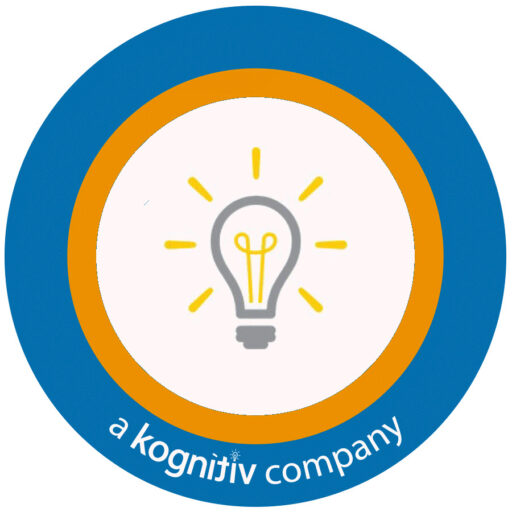
Navigating Stakeholder Management Challenges in Global Payroll Rollouts
Executing a successful global payroll rollout isn’t solely about technical processes; it’s about effectively managing the diverse interests and needs of various stakeholders. In this comprehensive guide, we’ll delve into the intricate realm of stakeholder management within the context of global payroll migrations. Let’s explore the common challenges that arise and the strategies to overcome them.

Understanding Key Stakeholders: The Backbone of Success
Global payroll rollouts involve a multitude of stakeholders, each playing a crucial role in the migration’s outcome:
- HR Managers: These gatekeepers of employee relations ensure that the migration aligns with the organization’s human capital strategy. Their insights guarantee that the migration doesn’t disrupt employee engagement and satisfaction.
- Payroll Teams: Directly impacted by the migration, payroll personnel need to adapt to new systems and processes. Engaging them in the planning and execution phases addresses their concerns and leads to a streamlined transition.
- External Vendors: Often providing essential software solutions, consultancy, or support services, external vendors’ contributions can significantly influence the success of the migration project.
- Finance Teams: The financial ramifications of the migration weigh heavily on finance teams. Accuracy and compliance are their focal points, and they require precise information to ensure a seamless transition without financial hiccups.
- IT Personnel: The backbone of the technical implementation, IT personnel oversee data transfer, system integration, and cybersecurity measures. Their expertise ensures the migration is not just smooth but also secure.
- Employees: At the receiving end of the payroll system, employees’ trust and satisfaction are at stake. Communicating changes transparently and addressing their concerns help maintain their confidence throughout the migration.
Analyzing Stakeholders: The Power of Influence and Interest
The foundation of effective stakeholder management lies in stakeholder analysis:
- Setting Priorities: A deep understanding of stakeholders’ influence and interest enables you to prioritize them based on their significance to the project. This ensures that resources and attention are allocated strategically.
- Tailoring Strategies: Each stakeholder group requires a tailored approach to communication and engagement. HR managers may value regular updates, while IT personnel might prefer technical briefings.
- Resource Allocation: By analysing stakeholder needs and expectations, resources can be efficiently allocated to address their concerns, resulting in a smoother migration process.
- Conflict Mitigation: Anticipating and addressing potential conflicts head-on minimizes disruptions and ensures the project stays on track.
- Promoting Participation: Engaging stakeholders actively from the outset fosters a sense of ownership, leading to better collaboration and a higher likelihood of project success.
- Enhancing Success Odds: An effective stakeholder analysis and management strategy significantly increase the chances of a successful global payroll migration.

Designing a Communication Plan:
The Bridge to Stakeholder Engagement
Crafting a robust communication plan is paramount to successful stakeholder engagement:
-
- Clear Messaging: Communication must be clear, consistent, and aligned with the project’s objectives. Ambiguities and misunderstandings can lead to confusion and resistance.
- Effective Dissemination: Identifying the appropriate channels and timing for communication ensures that stakeholders receive information in a way that resonates with them.
- Expectation Setting: Clearly defining project milestones, roles, and responsibilities sets the stage for a smooth migration process. This prevents unrealistic expectations and fosters collaboration.
- Building Engagement: Open lines of communication enhance stakeholder engagement, encouraging them to provide feedback and feel heard throughout the migration.
- Issue Resolution: Establishing channels for timely issue resolution builds trust. Stakeholders need to know that their concerns won’t be dismissed or overlooked.
- Transparency and Trust: A well-structured communication plan enhances transparency, which, in turn, nurtures trust among stakeholders.
Strategies for Effective Stakeholder Engagement: The Heart of Success
Engaging stakeholders effectively requires a strategic approach:
- Regular Updates: Providing stakeholders with timely updates about project progress keeps them informed and invested in the outcome.
- Feedback Sessions: Regular feedback sessions allow stakeholders to voice concerns, ask questions, and contribute valuable insights. This two-way interaction fosters a sense of collaboration.
- Interactive Workshops: Workshops, including training sessions and design reviews, are opportunities for stakeholders to actively participate in shaping the migration. This involvement contributes to smoother execution.
- Dedicated Support: Offering dedicated channels for addressing concerns and questions ensures that stakeholders have a direct line to assistance when needed.
Managing Risks and Addressing Issues: A Proactive Approach
Risk and issue management are critical components of stakeholder management:
- Proactive Risk Management: Identifying potential risks and issues before they escalate is essential. Early recognition allows for timely mitigation strategies.
- Minimizing Impact: Addressing risks and issues swiftly prevents negative consequences for stakeholders. This demonstrates your commitment to their concerns.
- Stakeholder Needs: Ensuring that stakeholder needs and concerns are promptly addressed fosters their confidence in the project’s ability to handle challenges.
- Project Continuity: Effective risk management minimizes disruptions, helping the project stay on track even when unforeseen challenges arise.
- Enhancing Satisfaction: Successfully managing risks and addressing issues leads to increased stakeholder satisfaction and trust.

Embracing Stakeholder Feedback: The Loop of Improvement
Incorporating stakeholder feedback is more than a courtesy; it’s a strategy for success:
- Strategic Alignment: Feedback allows you to align project strategies with stakeholder expectations, ensuring that their needs are at the forefront.
- Transparency and Trust: Open lines of communication and a willingness to listen build trust among stakeholders. They know their concerns are being considered.
- Valued Contribution: Involving stakeholders in decision-making validates their contributions and enhances their sense of ownership in the project’s success.
- Continued Involvement: Even beyond the migration, ongoing stakeholder involvement ensures that their perspectives remain valuable for continuous improvement.

Conclusion: Navigating the Complex Landscape
In conclusion, global payroll rollouts are intricate endeavours that demand meticulous stakeholder management. The synergy between HR managers, finance teams, IT personnel, payroll staff, employees, and external vendors forms the bedrock of success. By understanding their diverse needs, crafting effective communication strategies, and proactively managing risks and issues, you pave the way for a seamless migration.
Remember, the journey toward a successful global payroll rollout is a collaborative one. Encourage active stakeholder participation, open channels of communication, and maintain a sharp focus on meeting their expectations. In doing so, you not only achieve a successful migration but also cultivate enduring relationships that contribute to organizational growth and success.
